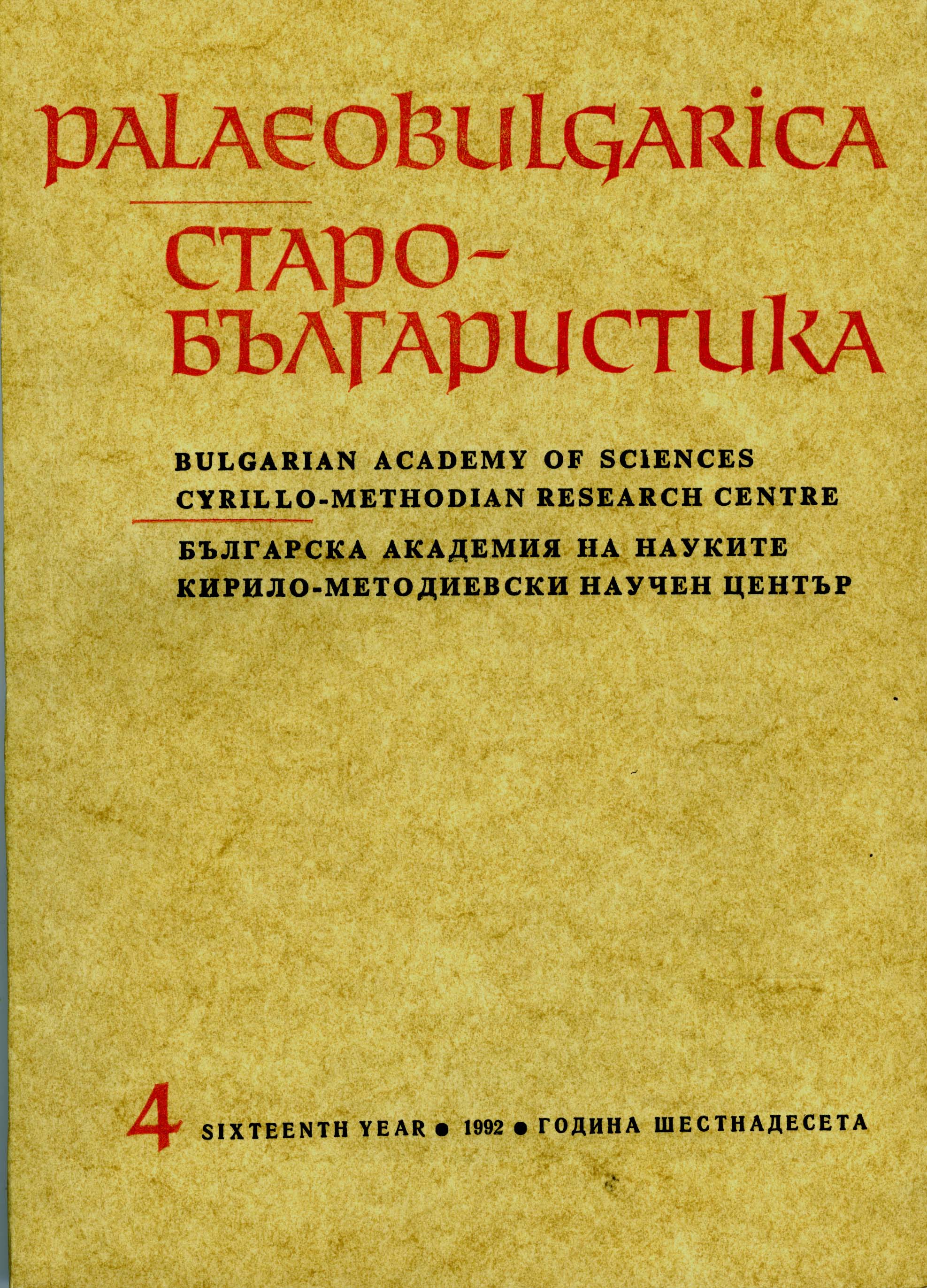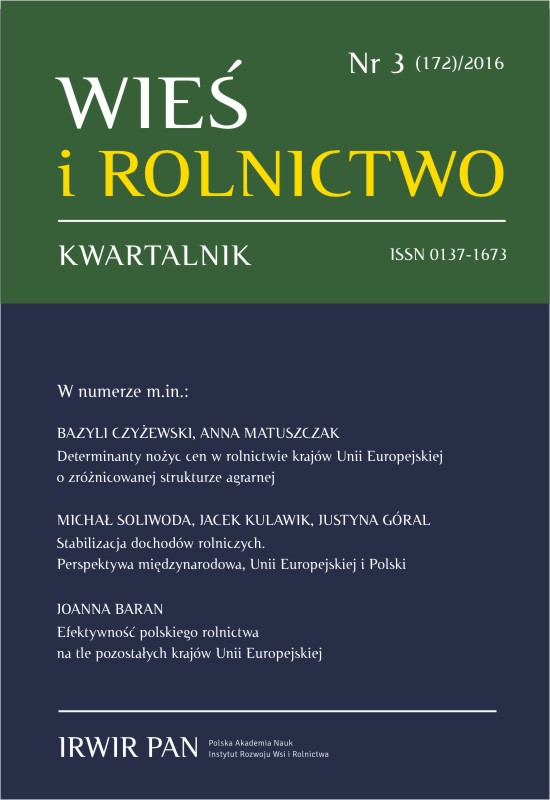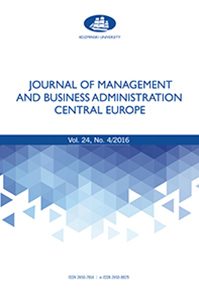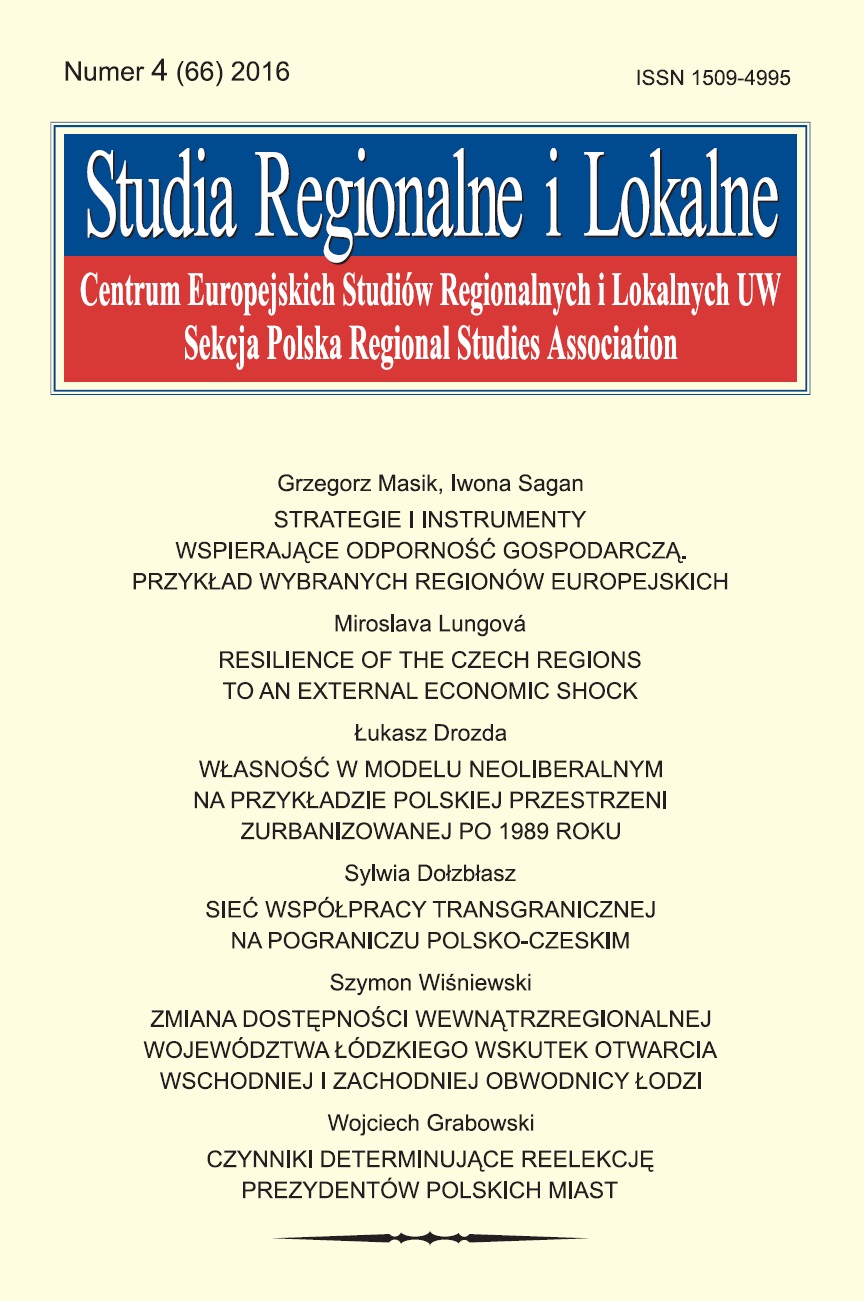





Keywords: Agriculture; efficiency; Data Envelopment Analysis; economic development; European Union
The article determines efficiency of agriculture in the EU Member States in2014 based on Data Envelopment Analysis method. The DEA model focused on minimizinginputs. The model features the following variables: 1 effect (value of agricultural production)and 4 inputs (arable area, number of people employed in agriculture, use of fertilizers, useof energy). It was found that among the 25 studied countries, 6 countries had efficientagriculture. The efficient agriculture group included the Netherlands, Denmark, Greece,the UK, Italy and Belgium. Based on the DEA method benchmarks have been defined forcountries with inefficient agriculture. On the basis of these benchmarks for inefficientagricultural sectors, it is possible to determine a combination of technologies that allow thesame results to be achieved with less input. The efficiency of agriculture in Poland faredpoorly compared to other EU Member States. The reason behind it might be structuralproblems, low labour and land productivity in the agricultural sector in Poland and theextensive nature of agricultural production.
More...
Keywords: financial position of local governments; Natura 2000 EEN; economic activity; Lublin voivodeship
The aim of the article was to determine the importance of Natura 2000 areas tolocal development in the Lublin voivodeship. It is hypothesized that the establishment ofthe European environmental networking programme Natura 2000 (N2000 EEN) resultedin a deterioration of the socio-economic situation of municipalities, as evidenced by theweakening of the income potential of budgets and the willingness of local authorities toinvest in the Natura 2000 EEN areas. It is also assumed that protective restrictions havecaused a significant need for intervention in the Master Plans of those municipalities. Inconnection with the above-mentioned assumptions, it has been assumed that the perceptionof the Natura 2000 network as a barrier to development will be dominant in the surveyedlocal governments. Literature analysis was used in order to achieve the aim and verify thehypothesis, including the analysis of strategic development documents of the administrativeunits and the Natura 2000 implementing instruments.It has been shown that the municipalities which included Natura 2000 areas featureda more favorable situation in terms of both the level and the dynamics of their incomepotential, as compared to other municipalities of the region. The most favorable situation,both in terms of income potential and the tendency to invest, was in the municipalities witha significant share of the Natura 2000 areas. The SWOT analysis has not clearly indicatedthe importance of Natura 2000 as a barrier, but it has not been seen as a stimulant fordevelopment. A small group of municipalities began to use their local natural values aselements of the developing territorial brands. In the light of the presented test results, thereis no clear reason to confirm the hypothesis of an adverse effect of the Natura 2000 EENon the local economy.
More...
Keywords: social innovations; rural youth; human capital; social capital
The aim of implementing social innovations is to eliminate the existing socialproblems, including problems of groups that are discriminated against. Contemporaryyouths are definitely a group which is disfavoured on the labour market. The objectiveof this paper is to point out the potential determinants of rural youths’ participation inthe process of social innovations. The analysis focuses on selected components of theparticipants’ human and social capital, which may be important for their participationin social innovations. The paper presents the results of sociological research (involvingthe auditorium survey technique) carried out in the period 2014–2015 in WielkopolskieVoivodeship, among young people aged 16–19 residing in rural areas. The participantsattended upper secondary schools (vocational schools, secondary technical schoolsand general secondary schools). The performed analyses led to the identification ofcomponents of youths’ human and social capital which may have a negative influenceon their participation in social innovations. First, young people have little knowledge oninnovations, including social innovations, while such knowledge is especially valuablefor future social innovators (also those who follow good examples in this regard) orpioneers of adopting social innovations in local conditions. Secondly, young people displaylittle interest in local matters, which limits the possibility of their participation in socialinnovations implemented by local entities. Thirdly, youths’ social activity is only limitedto school environment, which means that after graduation they may not continue thatactivity and thus not belong to networks in which social innovations are developed,implemented and adopted.
More...
Keywords: agriculture; external effects; emission of greenhouse gases; emission efficiency of greenhouse gases
The article tackles the emission of greenhouse gases (GHG) against the backgroundof environmental economics. It presents theoretical issues concerning externaleffects, Pareto optimal and the need to include environmental matters in the economicaccounts for agriculture. Based on the figures from the European Environmental Agency(EEA) and the Eurostat for 1990–2013, the level of agricultural GHG emissions wascalculated, including its efficiency. It was found out that France, the United Kingdom,Germany, Poland and Spain were responsible for a half agricultural GHG emissions in theEU. The average emission efficiency of the EU Member States in 2013 amounted to EUR391 of surplus per 1 ton of GHG emissions. The highest efficiency was recorded in suchcountries as Slovakia, Italy and Malta. In none of the investigated countries did agricultureachieve as high emission efficiency as the whole economy; at best, the index amounted to0.4–0.5.
More...
Keywords: land consolidation; agriculture
The article discusses the problem of farm structure and the justification forchanges thereof through land consolidation. There is no doubt that the appropriate areastructure of farms is a factor that significantly depends on economic efficiency and thecompetitiveness of individual farms, as well as of the entire Polish agriculture comparedto other European Union Member States. Analyses were carried out on the example of theMońki county (Podlaskie voivodship), which is the immediate source of agricultural rawmaterials for Polish dairy giants (cooperatives „Mlekovita” and „Mlekpol”). Appropriateanalysis criteria have been adopted in order to demonstrate the justification for consolidationand the conclusions of the analysis have been presented.
More...
Keywords: instrumental rationalism; metaphor of the “iron cage”
This paper discusses ways out of an approach adopted in the late nineteenth and early twentieth centuries, which I refer to as instrumental rationalism (pl. racjonalizm instrumentalny). It was to determine, inter alia, the place occupied by humans within an organization construed as a machine in the self-proclaimed modern era. It is one in which the substance of what we refer to as “here and now” is determined by rationality, functionality, utility, usability, effectiveness and effciency. This approach was best captured by Max Weber’s metaphor of the “iron cage” (German “Stahlhartes Gehause”, translated as “iron cage” by Talcott Parsons), although Weber himself refers to “like a light cloak, which can be thrown away any moment [...] shell as hard as steel” (Weber, 1994, p. 181).
More...
Keywords: Polish management; transformational leadership; restructuring of entrepreneurship
In the early 1990s, when I was spending most of my time teaching and conducting research at the UCLA Anderson School of Management, my dear friend and co-author of numerous publications, Professor Donald P. Cushman from the State University of New York in Albany, wrote to me: “Do not waste your time here, focus on what is happening in Poland, in this one-of-a-kind ‘management laboratory’ developing there at the moment. In order to catch up, Poles will need to absorb the entire acquis of management theory and practice over a very short period of time. It is an unprecedented situation, so go and watch, explain, participate”. I realized that for a researcher interested in management, it was indeed an unparalleled opportunity and one I simply could not miss. The fruit of my observations was the frst book on the business management transformation process in Poland and other countries of “the Socialist bloc” to be published in the U.S. (Koźminski, 1993), followed by numerous other studies and publications (Koźminski, 1998; 2008a; 2008b; 2008c; 2013; Koźminski i Yip, 2000).
More...
Keywords: corporate social responsibility; benefts of CSR; sustainable development; Poland
Purpose: This study investigates the benefts of being perceived as a socially responsible company. The main purpose of the research was to fnd out whether company managers consider that certain aspects of company activity may beneft from being perceived as socially responsible. Research limitations: The primary source of data used in this study was a survey of respondents’ views and opinions rather than an analysis of extensive numerical data.Methodology: The research methods included a literature review and a survey conducted in several Polish companies regarded as socially responsible. The so-called RESPECT Index, including socially responsible companies listed on the Warsaw Stock Exchange Main List, as well as annual rankings of responsible companies were used as a kind of reputation database for choosing survey respondents.Findings: The most important benefts indicated by the respondents included better frm image/reputation, improved relations with stakeholders, increased employee motivation, better communication inside the company, as well as more effective management and control over new aspects not considered before. Additionally, the identifed benefts were analyzed using different criteria, such as the size of the company or its feld of activity.Originality: The problem analyzed in this study is important, yet it is still not a suffciently examined issue in many emerging markets including Poland. As benefts taken into consideration in the survey are also valid for other fnancial markets, the results can be used for comparative studies of Poland and other countries.
More...
Keywords: rural areas; socio-economic development; agrarian structure; rural population; rural labour market; spatial development; Common Agricultural Policy; Farm Bill
This article presents the main conclusions from the research conducted byscientists employed in IRWiR PAN in 2014–2015. The analyses conducted address keyeconomic and social processes taking place in rural areas in recent decades. The articlecontains selected findings on: territorial structure of the individual farms’ sector, changesin demographic structures, the rural labour market, spatial development of rural areas,social changes and institutional and organizational development of the countryside. Animportant area of research undertaken in IRWiR PAN relates to the evaluation of theCommon Agricultural Policy and its comparison with policies implemented in othercountries, including Farm Bill in the United States.
More...
Keywords: retention; satisfaction; airline; North Cyprus
Purpose: This study empirically investigated the factors that affect customer retention in the airline industry in North Cyprus. These factors were service quality attributes, perceived safety, customer satisfaction, loyalty reward program, relationship commitment and customer loyalty. The study also investigated four different groups for purposes of travel (business, education, vacation and family visit) in the empirical model.Methodology: A descriptive approach was chosen to conduct this research. A quanhip between customer retention and the related study factors; however, not all of these relations are signifcant. The results also showed that the different purposes of travel had different influences on the variables regarding the positive and signifcant relations between them. Some independent variables had a negative effect on the dependent variables.Conclusions: This research was limited to one group and place: the students of Eastern Mediterranean University in North Cyprus.Originality: This study connected the retention, loyalty, satisfaction and service quality factors as attributes. In addition, this research was the frst to include other independent factors affecting satisfaction and loyalty in a comparison between four different groups regarding the purpose of travel in the airline industry.
More...
Keywords: interfrm cooperation; alliance portfolio; ICT; hyper-growth firms strategy
Purpose: The main purpose of this study was to compare the phenomenon of interfrm cooperation strategy in both hyper-growth, and stable-growth knowledge and technology–intensive frms, in a country characterized by a high level of generalized trust: Sweden.Methodology: Qualitative methods were incorporated: direct semistructured interviews with top managers in 13 ICT frms (8 hyper-growth and 5 stable-growth), analyzis of reports, corporate websites and press releases. Furthermore, interviews in 3 expert frms in the industry were conducted, facilitating interfrm cooperation.Conclusions: There were signifcant differences in interfrm cooperation strategy in two distinguished groups of the frms: hyper-growth, and stable-growth. Managers’ individual approaches to uncertainty, strategy and cooperation might be more important than institutional settings. The ICT frms operate in a constantly changing global environment and local context seems to have only a minor impact on the rules of the game in the industry.Research limitations: This study was a qualitative explorative approach as an introduction to further empirical research.Originality: The study presents an interfrm cooperation phenomenon incorporating different perspectives and settings. It contributes to alliance portfolio literature (forming and managing of alliance portfolio in a different context/country/industry), and enhances understanding of frm strategies characterized by different growth rates.
More...
Keywords: higher education; quality evaluation; effciency; performance measurement (quality)
Purpose: The article addressed the problem of relationships between university funding and effciency on the one hand and the quality of teaching and research on the other.Methodology: The measurement of teaching and research quality in Polish universities was derived from two sources: 1) evaluation scores of teaching quality given to universities by the Polish Accreditation Committee, and 2) the research category grades given to university departments or units by the Polish Committee for Evaluation of Scientifc Units. Subsequently, the quality measurements were correlated with fnancial indicators and effciency scores obtained from data envelopment analysis.Findings: The correlation and regression results indicated that public universities that have received higher scores of teaching quality simultaneously have higher average scientifc categories. There was also a substantial relationship between the revenue per student and the revenue per teacher and variables describing quality but the regression analysis exhibited opposite directions regarding the type of quality indicator.Practical implications: The authorities of a university can simultaneously track the improvement of quality or fnancial effciency without losing their interdependence when reforms of HEI operations are conducted.Research limitations/implications: The quality of teaching and research at universities was assessed despite the limited availability of internal information gathered from higher education institutions (HEIs).Originality: The study proposed new measurements of quality derived from external evaluation bodies and investigated the relations of these measures with selected fnancial and effciency indicators.
More...
Keywords: economic resilience; evolutionary approach; agency perspective; European regions
The concept of economic resilience is a relatively new subject of debate within the framework of regional studies. In the first part of the paper, the authors present two main concepts of resilience, i.e. an evolutionary approach and an agency perspective. On the example of Wight European regions, they describe the actions taken to mitigate the adverse effects of the economic crisis and the strategies that build economic resilience. The final section identifies the key effective tools used in most analyzed regions.
More...
Keywords: resilience; region; economic shock; downturn; sensitivity; recession; Czech regions
The article explores resilience of the Czech NUTS3-level regions to an external economic shock in the form of the latest global economic crisis of 2008-2009. It begins with a brief introduction of the concept of resilience and of terminological and methodological issues associated with operationalizing it. Next, regional resistance to the external economic shock is assessed using sensitivity indices of relative output and employment contractions. Finally, the nature and severity of the shock as well as regional disparities in recoverability are investigated using employment data.
More...
Keywords: borderland; transborder cooperation; network; border; Polish-Czech borderland
The aim of this paper is to identify the character of transborder cooperation on the local level in the Polish-Czech borderland with a special focus on the transborder relations network. To this end, the author analyzes cooperation co-financed under Poland-Czech Republic Cross-Border Cooperation Programme 2007–2013 in the framework of ETC and examines all realized Project and all beneficiaries, i.e. 250 projects and 350 Polish and Czech institutions. Due to the mountainous character of the Polish-Czech borderland, special attention is paid to projects concerning tourism. The research reveals that the cooperation network is poorly developed. However, the most import ant nodes in this network are clearly visible and they are the most active institutions that shape the relations of transborder cooperation.
More...
Keywords: transport accessibility; time accessibility; potential accessibility; bypass; road network; the Łódź province
This paper focuses on the changes in transport accessibility at the regional scale in terms of individual car transport due to the introduction to the regional road network of the bypasses of Łódź in the meridian course. The changes are determined on the basis of measures of the time and potential accessibility of the network, conducted before and after the ring roads were implemented. The results are presented in both relative and absolute terms for each of the 4956 settlement units and 177 communes of the Łódź region. The author determines that the construction of motorways and expressways, especially those representing bypasses of large urban centres, helps to increase the cohesion of a region and increase accessibility of peripheral areas, while the size and spatial extent of the impact of road investments are clearly differentiated.
More...